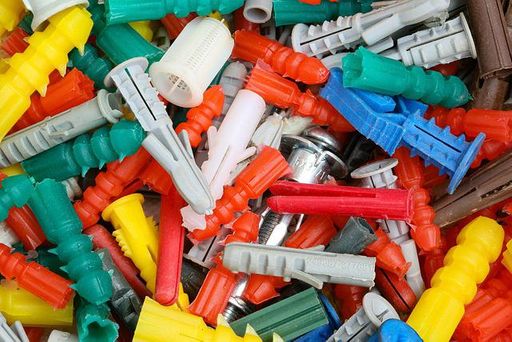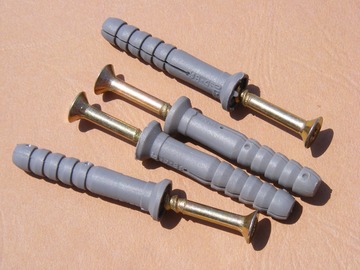The drywall in homes tends to be made from soft material like paper and compressed gypsum, making them susceptible to collapsing around any embedded screws and nails. Especially when looking to mount or frame things onto drywall, nails, and screws are simply not designed to handle the soft material. Fortunately, the perfect solution exists through the use of drywall anchors since they are designed specifically to latch onto drywall and provide secure anchoring fit for mounting and framing things onto the wall. Drywall anchors come in various types for varying purposes, making it essential to understand each type before picking one for their needs. To make the selection process easier, this article provides key details on each type of drywall anchor.

Strap Toggle Drywall Anchor
Although it may not be as secure compared to the conventional toggle bolt, the strap toggle anchor is still capable of a heavy-duty anchor that is extremely simple to use. Even for complete beginners, strap toggle anchors require very little effort through their single-unit design, which can be installed without the need for added fixtures, nails, or screws. Installing the wall anchor is as easy as inserting the carbon steel wings into a drilled hole and securing it into place by strapping the plastic locking mechanism.
Butterfly Bolt Drywall Anchor
Also known as a toggle bolts, butterfly bolt anchors resemble wing-like mechanisms that lock onto the wall’s back as a sturdy and long-lasting grip. Half-inch butterfly bolt anchors are known to be able to fully support heavy loads of up to 105lbs. onto inch-thick walls.
Plastic Winged Anchors
Winged plastic anchors provide a hefty way of drywall anchoring without damaging the drywall or eventually becoming loose like most metallic anchors. Winged anchors come with wing-like designs, a screw, and a wand. Installing plastic winged anchors is as simple as inserting the anchor into a drilled hole, and further pushing the wand into and through the wall anchor. Driving a screw into the wall anchor will expand the wings until they are securely pressed against the wall’s backside.
Steel Hollow Wall Anchor
A steel hollow wall anchor, or molly bolt, is proven to be highly resistant against vibrations while also providing reliably stable and sturdy anchoring into just about any hollow wall. These steel anchors are optimal for hollow walls like plywood and plasterboards. Despite any heavy-duty ratings or confirmation, steel hollow anchors are very capable of effectively securing heavy loads. Ideally, steel hollow wall anchors are great for hanging towel supports, coat hangers, décor, and even mounting televisions within a certain weight range.
Sleeve Drywall Anchor
Sleeve anchors tend to be used in securing anchored seats at public venues and electric radiator installations in homes. Mainly due to their unique style, sleeve anchors are effectively flexible and come with a design that distributes weights for efficient anchoring. This also means that sleeve anchors are capable of anchoring heavyweights like towel supports and hefty shelves.
Alligator Drywall Anchor
Known for their versatility, alligator anchors are efficient all-around anchors that can be used to secure load onto ceilings, floors, drywall, plaster, green board, concrete, ceramic tile, and practically every other surface material. Alligator anchors are known for their hefty anchoring since they are stronger compared to most other metal drywall anchors. Also, the simple head feature and anti-rotation design ensure against any spinning and countersinking issues. For anti-rust and affordable installation, it would be ideal to pair the anchors with some stainless steel screws.

Plastic Expansion Drywall Anchor
For most DIY regulars, the plastic expansion anchor proves to be sufficient and gets light-duty jobs done quite well. These anchors come in a uniquely durable and flexible design, making them a staple for most easy duty anchoring. Despite their functionality and well-roundedness, plastic expansion anchors are highly susceptible to overexpanding when driven through with a screw. This means that they are highly unlikely to be reusable when already installed. Non-reusability can be a major issue for some, especially when they are installed incorrectly in the wrong positions.
Conclusion
Drywall anchors are effective solutions for those looking to mount or frame things onto their drywall, but can also be difficult to choose from given the wide variety of varying shapes and designs. By understanding each drywall anchor type, deciding on the most suitable option for your needs can be made easy. In essence, picking the right drywall anchor is a matter of understanding the types of drywall anchors and determining which one best suits your specific needs.
